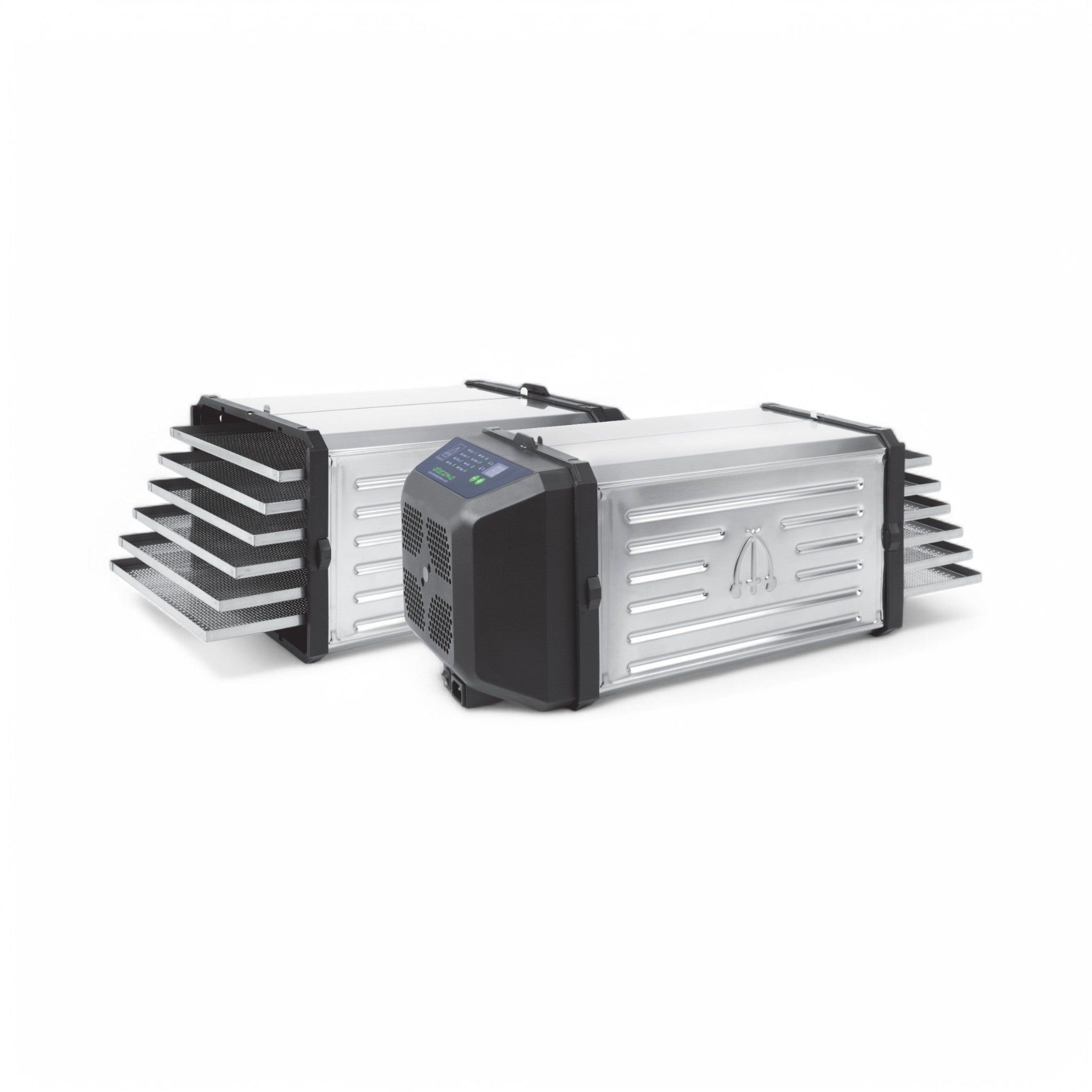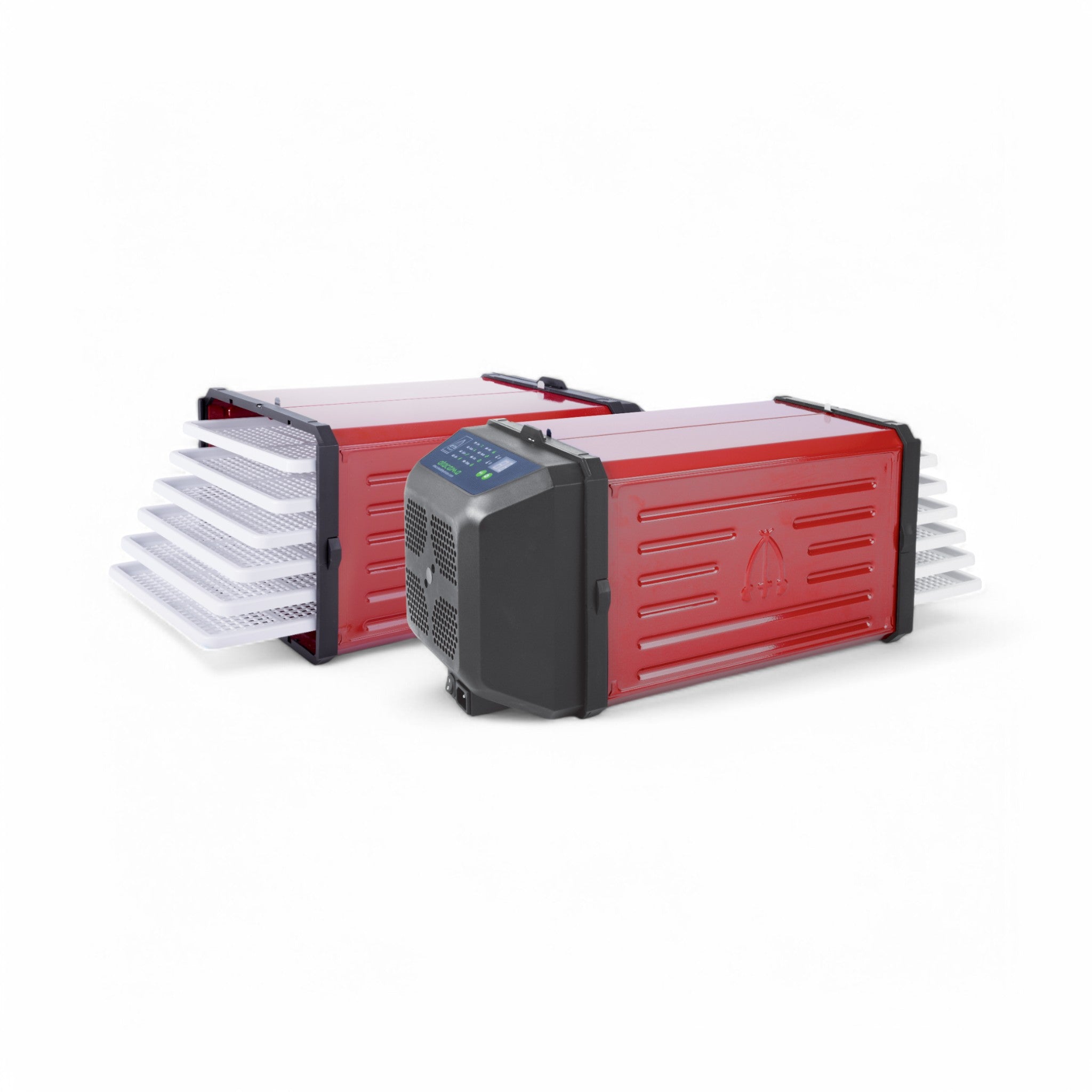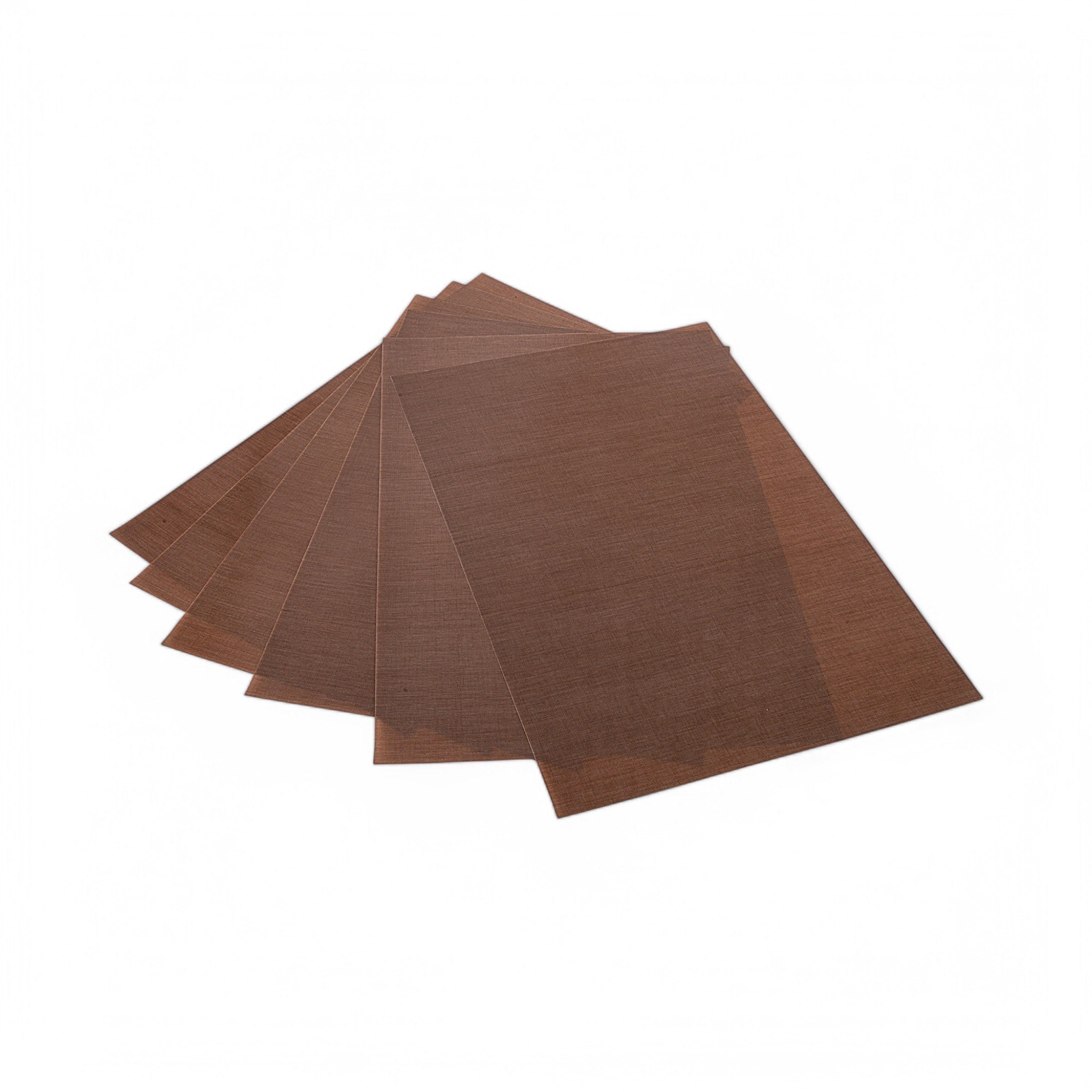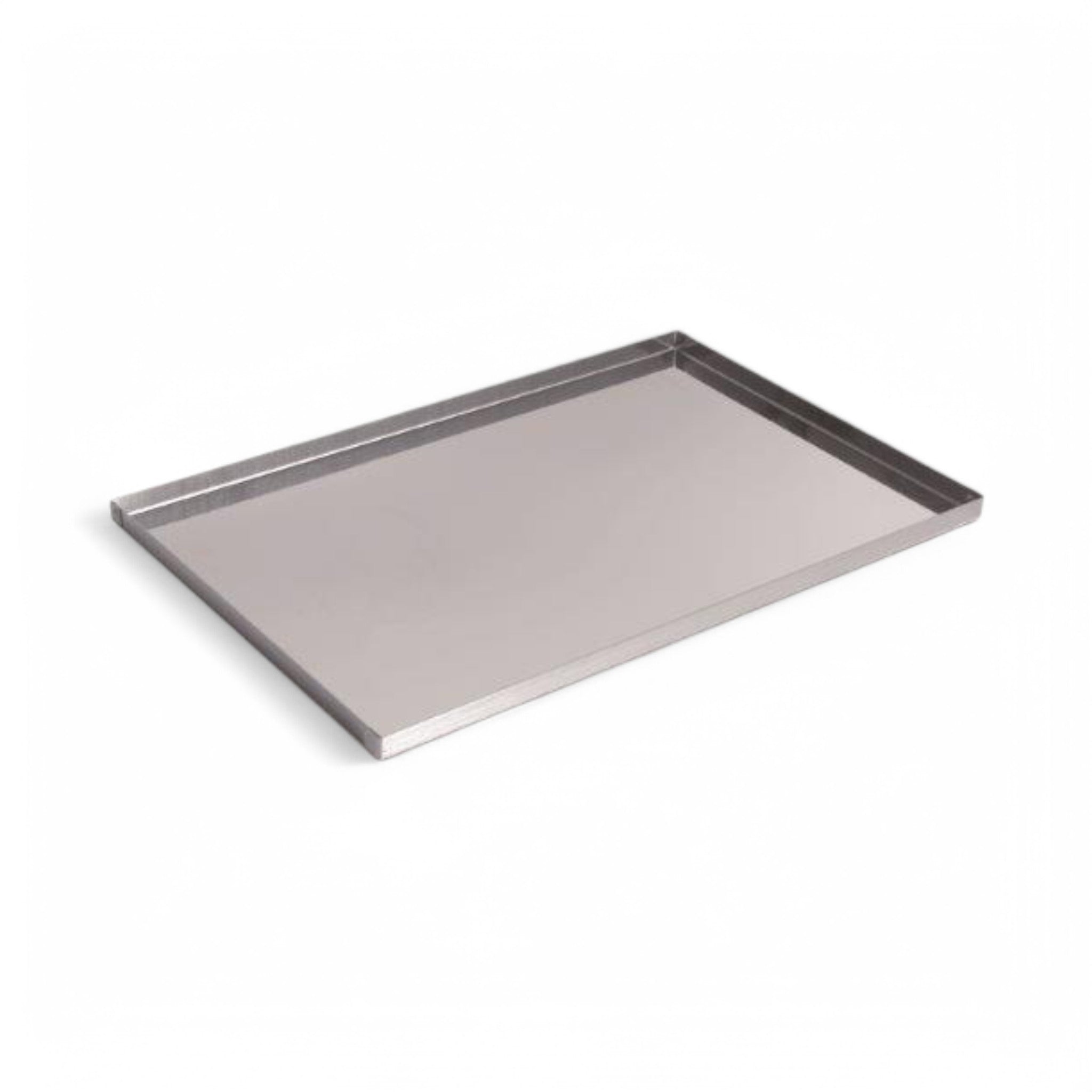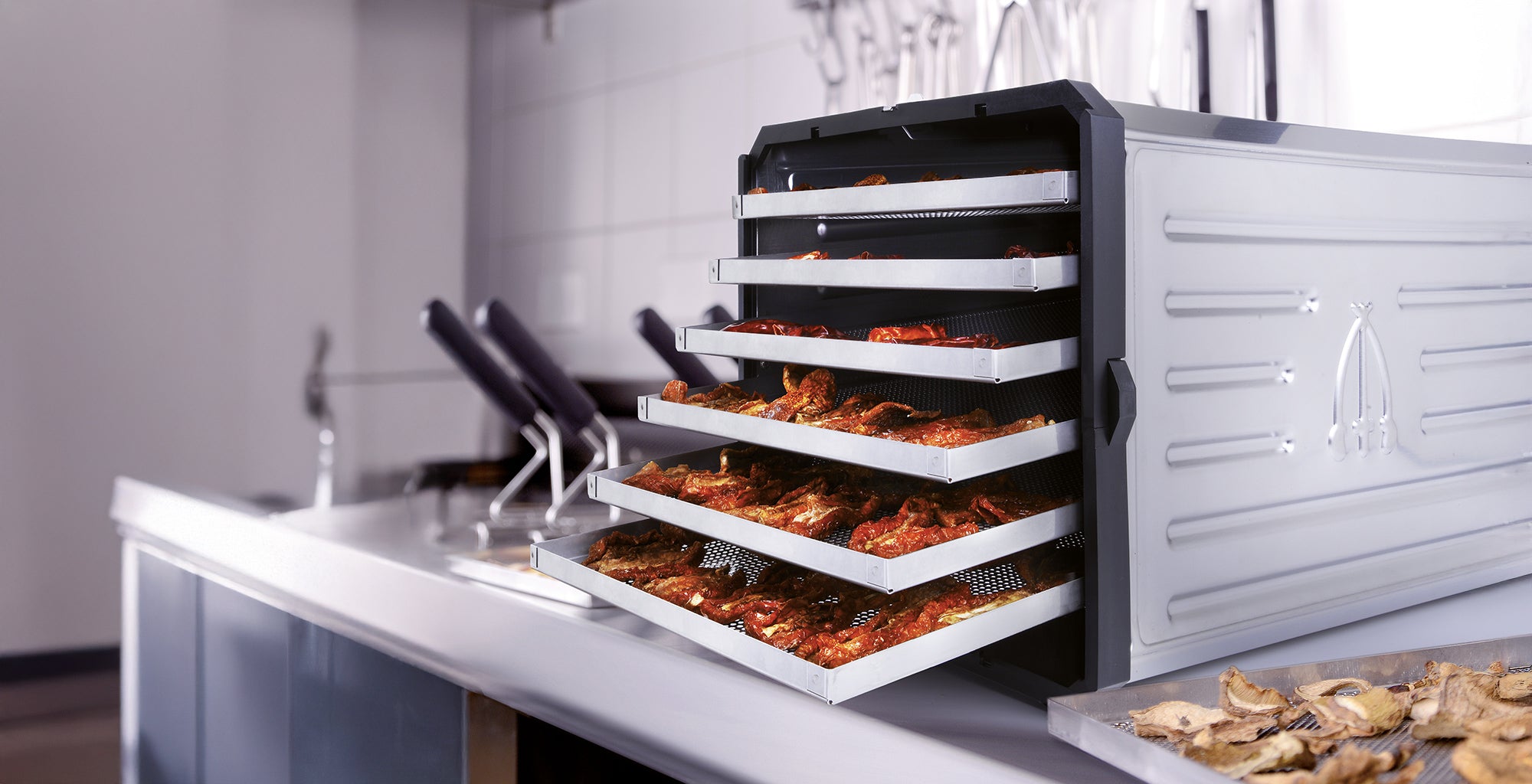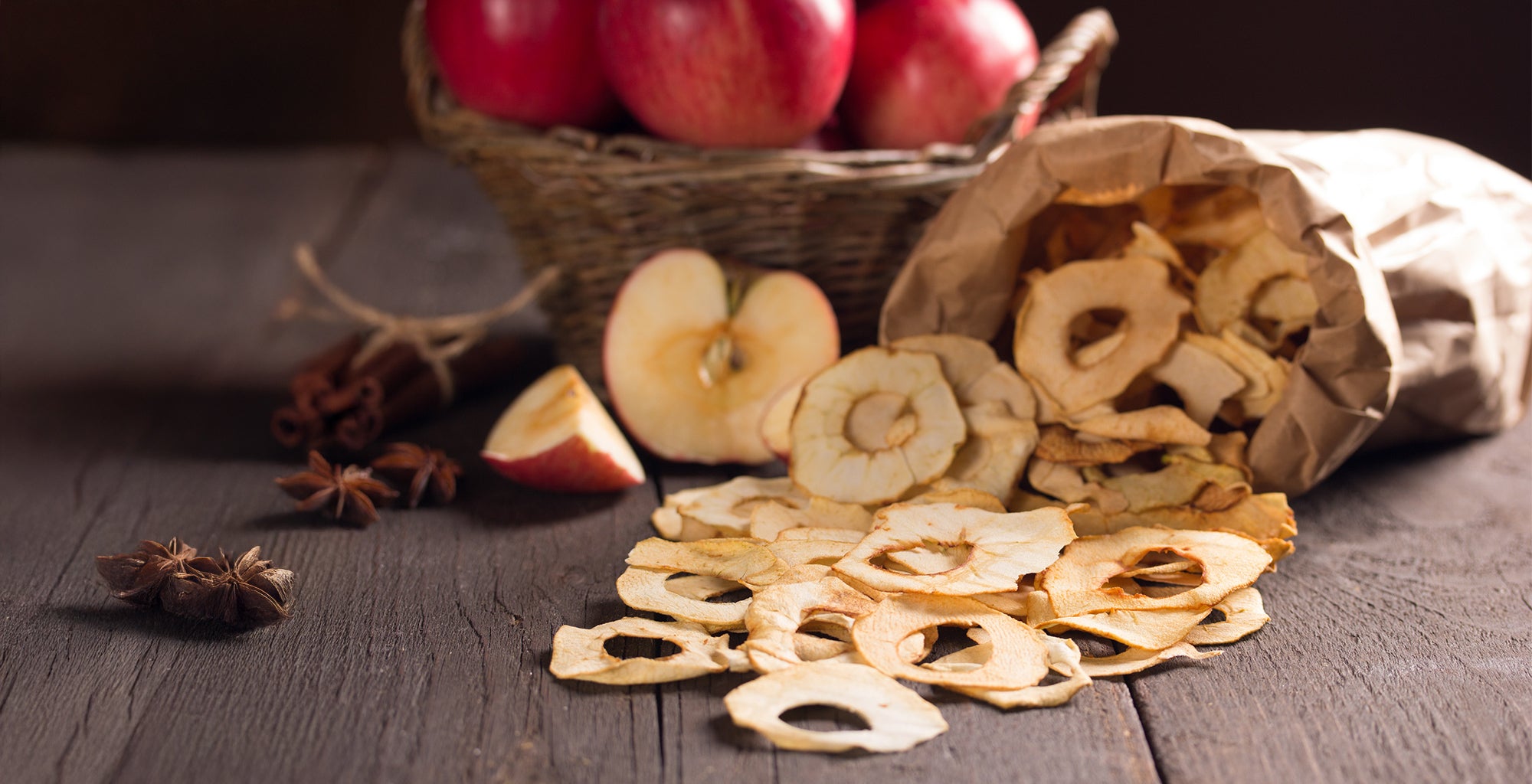Preserve nature's best
Innovative, efficient, and easy to use, the Atacama dehydrator makes it simple to preserve fruit, vegetables, mushrooms, herbs, and many other foods, guaranteeing consistently tasty and long-lasting results. Enjoy your favorite foods more easily than ever, preserved naturally and economically, while experimenting with new recipes and original flavors.
The Benefits of dehydration
Natural
Dehydration preserves almost entirely the organoleptic and nutritional properties of food, as it does not undergo chemical or mechanical treatments.
Easy and creative
Dehydrating is simple and immediate, requires no special skills, and is accessible to everyone; it also allows you to create original flavors and invent new recipes.
Cheap
The electricity cost for dehydrating is minimal. Additionally, containers can be opened and closed multiple times without damaging the food inside.
Eco-friendly
Abundant harvests from the garden, surplus food purchases, and even scraps can be preserved and reused without waste, using only minimal amounts of energy.
What is dehydration?
The dehydration process removes the water content from food, slowing the growth of bacteria, fungi, and yeasts, which naturally thrive in moisture. The key to successful dehydration is the presence of ventilated warm air, while for high-quality results, it is important to regulate and monitor both temperature and airspeed.
How do Atacama dehydrators work?
Atacama dehydrators are equipped with a horizontal airflow system and a temperature control mechanism that optimize both energy efficiency and drying time. Once the desired food is placed on the dedicated trays, the heated air is forced through the drying tunnel, drawing out the moisture from the food by osmosis.
What are the best products to dehydrate?
There are countless foods worth preserving. Those with a sweet tooth can delight their taste buds by dehydrating apricots, strawberries, peaches, apples, bananas, blueberries, cherries, and dates, which become even tastier when used as ice cream toppings or cake decorations. Vegetable lovers can preserve the flavors of mushrooms, tomatoes, beets, beans, pumpkins, corn, and broccoli for a long time. As for animal proteins, options include dehydrated beef, chicken, or fish. And don't forget herbs, flowers, and plants to create flavorful spices and aromatic infusions. The possibilities are truly endless!
Which products are not suitable for dehydration?
Some products are not recommended for dehydration in a home electric dehydrator, such as those with a high fat content like avocado, cheese, milk, eggs, certain meats, and fish. To preserve these foods, we recommend vacuum sealing. For other information, visit takaje.com
How long do dehydrated foods last?
If you want to include essential nutrients in your diet, season after season and with minimal investment, dehydrating fruits and vegetables to preserve their organoleptic properties is an excellent method. Once dehydrated, food takes up very little space and can be neatly stored as you prefer. In most cases, dehydrated foods can be stored for up to 12 months, while spices and herbal teas can last for several years! Dehydrated meats, however, should be consumed within 2 or 3 months.
What is the maximum temperature reached by a ventilated dehydrator?
High-quality ventilated dehydrators operate within a range from room temperature up to approximately 70 °C.
Why do some ventilated dehydrators not exceed 70 °C?
Because higher temperatures could alter the nutritional properties of foods, causing the loss of vitamins and minerals. Maintaining a lower temperature ensures better preservation of the food’s original qualities.
Why don't foods burn during dehydration, even if the temperature exceeds 60 °C?
Because during dehydration, the evaporation of water from the food keeps its surface temperature lower. As long as there is sufficient moisture inside, the food remains cooler despite the higher air temperature.
Why is the air temperature coming out of the dehydrator lower than the temperature set on the thermostat?
Because part of the heat energy is absorbed by the moisture present in the food. This process lowers the temperature of the outgoing air compared to the air circulating inside the dehydrator.



